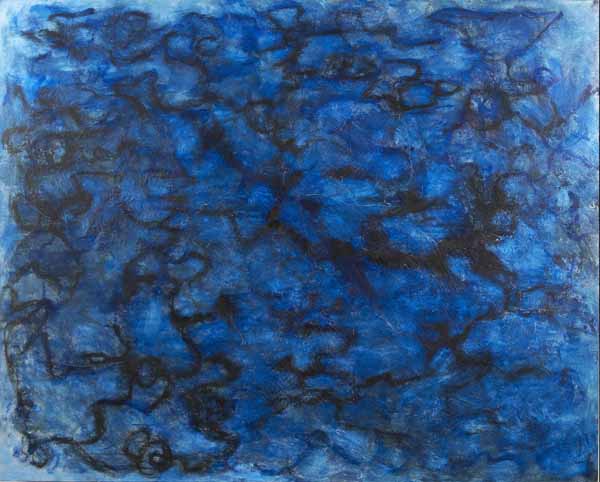OEUVRE
Abstract Art
of
Renee Radell
Renee Radell has proven to be an unusually versatile Post-War and Contemporary American painter. A consummate colorist and master of art’s essential elements, Radell has embraced the infinite possibilities of abstract art in various periods throughout her career.
Her early abstract paintings showed influences of abstract art pioneers Kandinsky and Rothko as seen in “Implosion” (1952) and her “Vibrations” (1960) series. Shape and composition took front and center in a limited edition of lithograph monoprints from the 1970s supported by several faculty grants from Mercy College of Detroit. However, it was not until later in life that Radell dedicated years of focus to the abstract genre.
Turn of the Millenium
The move into to a spacious studio in Midtown Manhattan with flooding natural light, inspired her most focused career commitment to abstract art subject matter from 2005-2013. Therein, Radell was clearly influenced by Color Field Painting, Abstract Expressionism, and American Abstract Lyricism. However, she created her own form of abstract art with emphasis on color and intrinsic themes such as music, rather than a reliance on gesture.
Radell’s lifelong love of music, especially classical and jazz, was a core inspiration for a wonderful series of abstract music painting with titles such as Vibrato, Manifesto, Cadence, Rhapsody and many others, virtually explode in color and represent a living bridge between the visual and auditory senses.
“Yet another adventure,” Radell says with self-effacing candor about the process resulting in this remarkable series. “A challenge to explore pure color and its hidden layers, with each variation igniting another, and another, like lights going off.”
Indeed, on her studio wall, a quote from Wassily Kandinsky remains on display:
“Color is a power that directly influences the soul.”
Representational Vectors
Within her abstract paintings, Radell sometimes allows hints of representational art to surface, integrating varying degrees of figurative and landscape associations. About Eventide, for instance,, New York critic Mellisa Stern commented in 2012:
“Referencing landscapes there is a lovely interplay between atmospheric mark-making and the firm strong black marks that clearly show the hand of the artist. The strain between these contrasting languages of marks and color is quite effective. All of the paintings in which Radell has used these dark punctuation gestures are strong and stand out.”
In a similar vein, a keen eye can see traces of the Vaucluse motif in Cadence, itself a proud component of the musical abstractions series. And in Swarm and Involution, one imagines a congregation of humanity, one of Renee Radell’s recurring social commentary themes

























